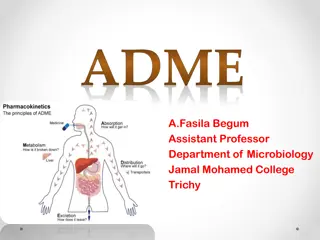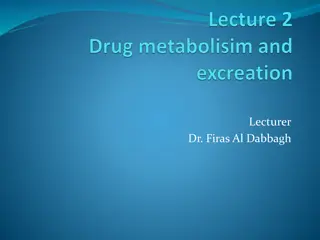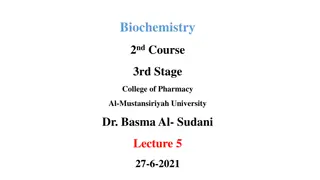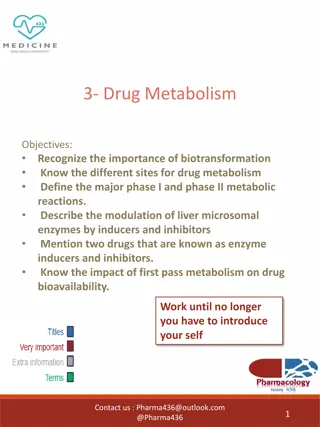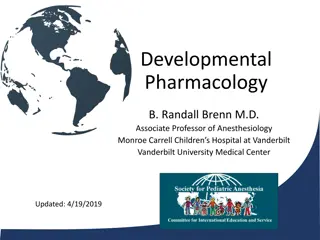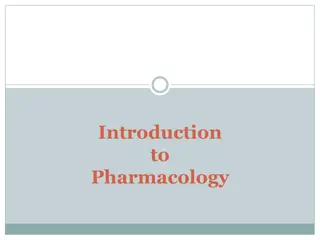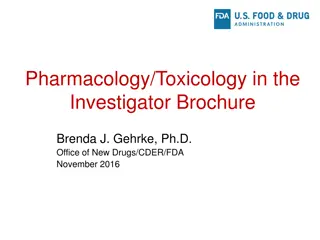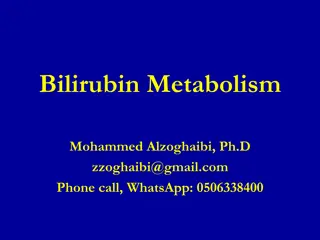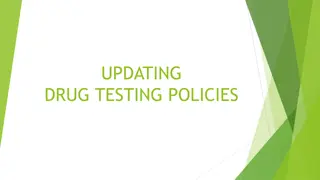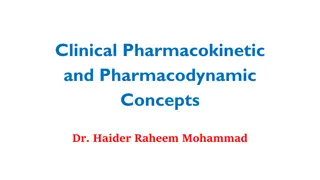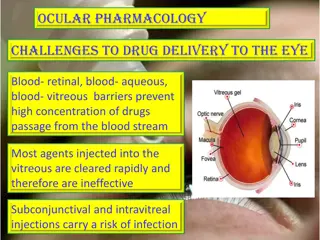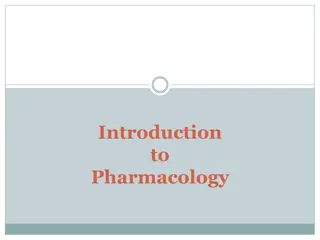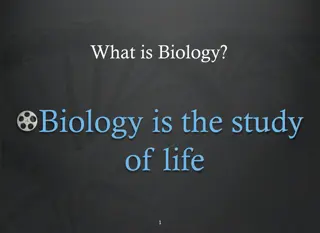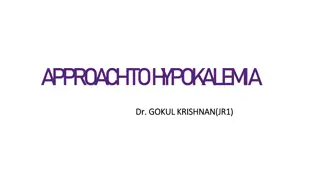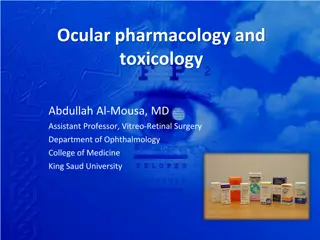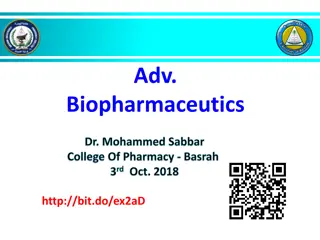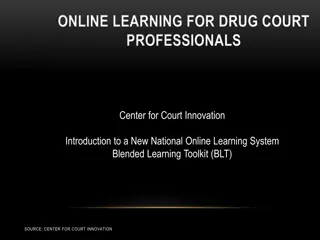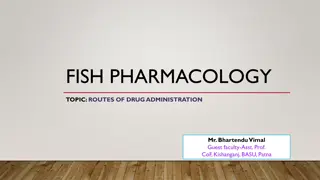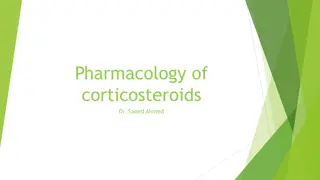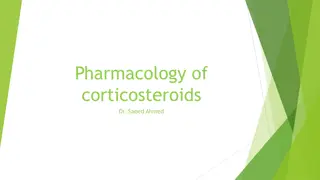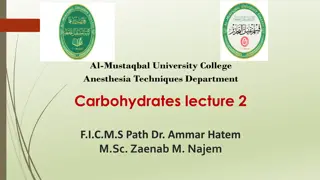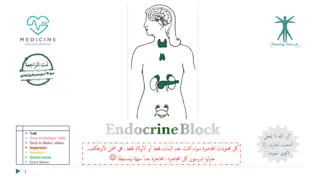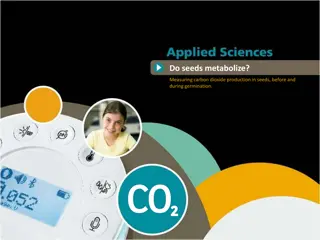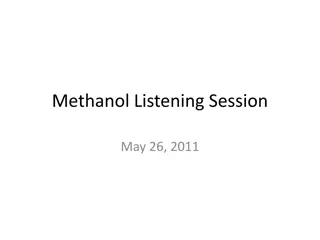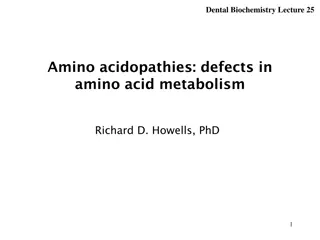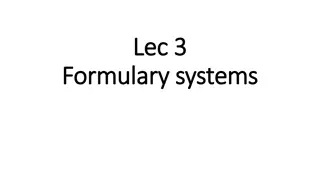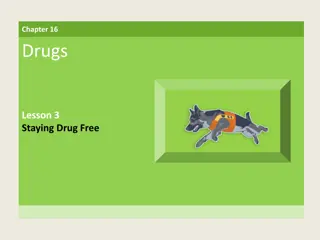Understanding Drug Metabolism and Excretion in Pharmacology
Drug metabolism involves the biotransformation of pharmaceutical substances in the body, primarily in the liver, to facilitate their elimination. This process helps convert drugs into less active forms for enhanced elimination through various reactions in Phase I and Phase II metabolism. Factors such as age, sex, genetic status, and disease state impact metabolic elimination. Enzymes like Cytochrome P450 play a crucial role, and inhibitors and inducers can affect drug metabolism. Overall, a comprehensive understanding of drug metabolism and excretion is essential for pharmacologists and toxicologists.
Download Presentation

Please find below an Image/Link to download the presentation.
The content on the website is provided AS IS for your information and personal use only. It may not be sold, licensed, or shared on other websites without obtaining consent from the author. Download presentation by click this link. If you encounter any issues during the download, it is possible that the publisher has removed the file from their server.
E N D
Presentation Transcript
Drug Metabolism and Excretion Drug Metabolism and Excretion M.Sc. Duaa Falah M.Sc Hader Ridha pharmacology and toxicology
Metabolism drug metabolism is the term used to describe the biotransformation of pharmaceutical substances in the body so that they can be eliminated.
Drugs and toxins are seen as foreign to patients bodies. Drugs can undergo metabolism in the lungs, blood, and liver. Body works to convert drugs to less active forms and increase water solubility to enhance elimination. Liver - primary route of drug metabolism and may be used to convert pro-drugs (inactive) to an active state
Types of reactions Phase I reaction : o Cytochrome P450 system o Located within the endoplasmic reticulum of hepatocytes o Through electron transport chain, a drug bound to the CYP450 system undergoes oxidation or reduction o Enzyme induction. o Drug interactions.
Phase I reactions types oHydrolysis oOxidation oReduction oDemethylation oMethylation oAlcohol dehydrogenase metabolism
Phase II reactions oPolar group is conjugated to the drug oResults in increased polarity of the drug oTypes of reactions Glycine conjugation Glucuronide conjugation Sulfate conjugation
Enzymes cytochrome P450 reductase are inducible, and inhibitor (competitive, non-competitive): Inhibitors: cimetidine prolongs action of drugs or inhibits action of those biotransformed to active agents (pro- drugs). Inducers: barbiturates, carbamazepine shorten action of drugs or increase effects of those biotransformed to active agents. Blockers: acting on non-microsomal enzymes (MAOI, anticholinesterase drugs).
Many Factors affect Metabolic Elimination Sex age genetic status cardiac output disease state
Elimination The irreversible removal of the parent drugs from the body. It is include 1) Metabolism (e.g. by liver). 2) Excretion (e.g. by kidney).
1.Pulmonary = expired in the air (Gasses and volatile liquids) simple diffusion from the blood into the airway. 2.Bile = excreted in feces (enterohepatic circulation). 3.Renal= (glomerular filtration, tubular reabsorption and tubular secretion).
Kidney Excretion of Drugs Only the free unbound drug is filtered through glomerular tuft. Drugs can be actively secreted by the tubule (e.g. penicillin). Urine pH can determine how much of the drug is excreted. For weak acids (e.g. aspirin), making the urine alkaline will make the drug ionized, so there will be less tubular absorption because the charged drug stays in the tubule lumen. The converse is true for weak bases (e.g. amphetamine), where acid urine increases excretion. Acid urine will ionize a weak base, making the charged drug stay in the tubule lumen. o o o o o
Many Factors affect Renal Excretory Elimination renal blood flow plasma protein binding tubular urinary pH
Pharmacokinetic Principle o Half-life = time required for serum plasma concentrations to decrease by one-half (50%) ,4-5 half-lives to reach steady state. ?= 0,693 Vd/CL ?? o Clearance (CL): the relationship between the rate of elimination of the drug and the concentration of the same in the plasma: CL = elimination rate/[CP] Total Clearance = Hepatic Clearance + Renal Clearance
Steady-state concentration (CPSS) : the amount of drug administered is equal to the amount of drug eliminated within one dosing interval resulting in a plateau or constant serum drug level, the time to reach steady state is four to five half-lives drugs with short half-life reach steady state rapidly. drugs with long half-life take days to weeks to reach steady state ???? = ???? ????/?????????
Loading doses Ld: o Is an initial higher dose of a drug that may be given at the beginning of a course of treatment before dropping down to a lower maintenance dose. o A loading dose is most useful for drugs that are eliminated from the body relatively slowly, i.e. have a long systemic half-life. Loading Dose = Vd x CPSS
First order (Linear) Rate of elimination is proportional to amount of drug present, Dosage increases result in proportional increase in plasma drug levels. Zero order(non linear or Saturated ) Rate of elimination is constant regardless of amount of drug present ,Dosage increases saturate binding sites and result in non- proportional increase/decrease in drug levels.



